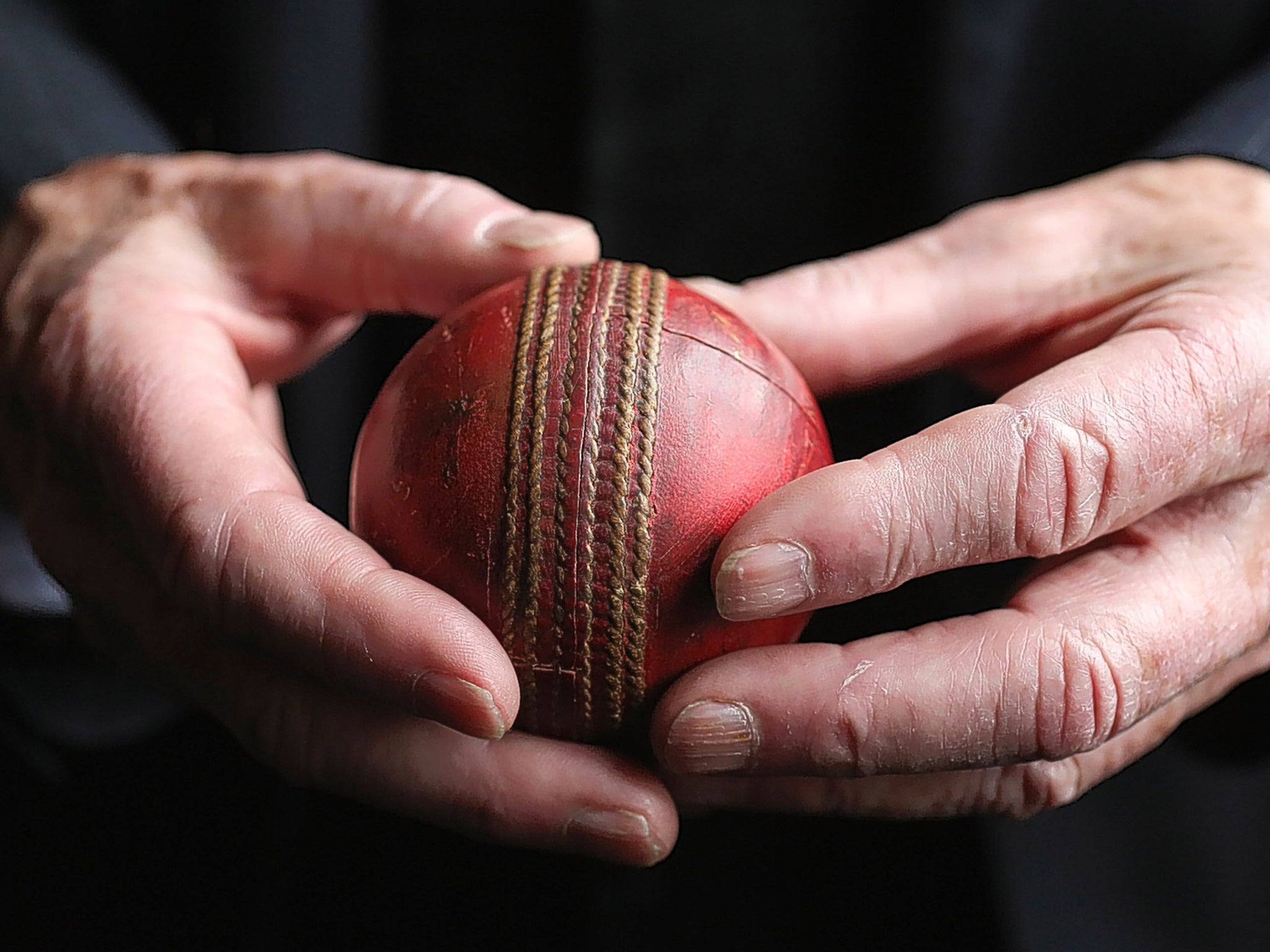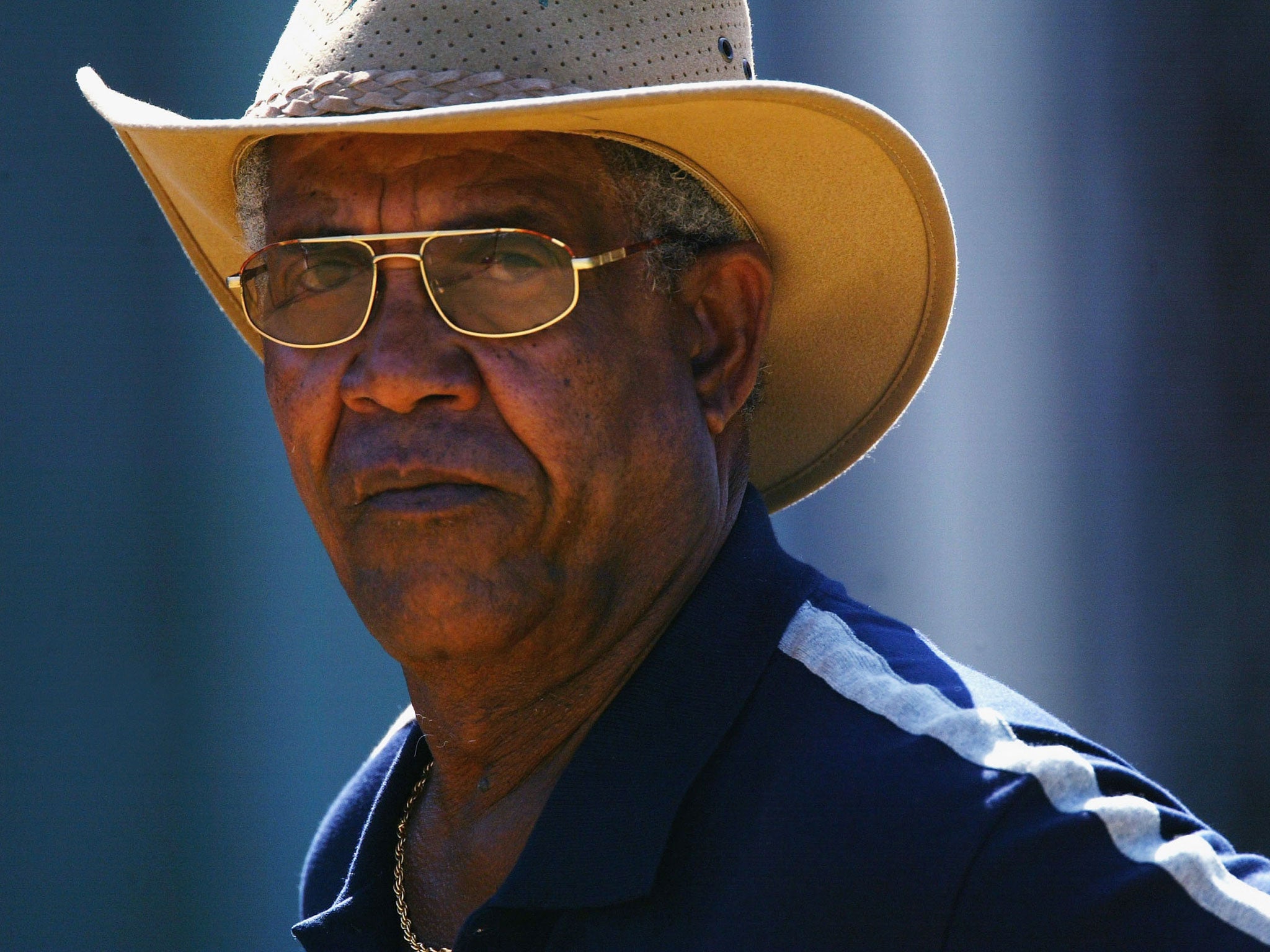Riddle of the £26,400 ball Garry Sobers may not have hit
Garry Sobers made history when he hit six sixes in an over in 1968. But, writes Jon Culley, what has followed is akin to an Agatha Christie novel

On 31 August 1968, at the St Helen’s Cricket Ground in the Brynmill area of Swansea, the most famous cricketer in the world did something that would forever resonate in the history of the game by hitting all six balls of the same over for six, the first batsman to achieve the feat in a first-class match.
The batsman was Garry Sobers – later Sir Garfield – the West Indies all-rounder who was playing for Nottinghamshire. He swung his bat with such vigour at the final delivery that the ball soared out of the ground and, in the words of Wilf Wooller, the former Glamorgan player who was commentating for the BBC, went “way down to Swansea”, a couple of miles away.
It had not gone quite that far. In fact, a 17-year-old schoolboy, Richard Lewis, found the ball, its leather casing battered and torn, in nearby St Helen’s Avenue and returned it to the ground before the three-day match was over. To commemorate the feat, Glamorgan arranged for the teenager to present the ball to Sobers himself to take back to Nottinghamshire as a gift to the county.
And so it was, the story goes, that Sobers put the ball into his cricket bag and took it to Trent Bridge.
There was at the time no cricket museum in which to display the ball at the ground, so Sobers gave it to John Gough, secretary of the Nottinghamshire Supporters’ Association, who arranged for it to be shown off in the window of a building society in Nottingham’s historic Old Market Square, where it resided for about a year before being returned to the association’s office at Trent Bridge.
Sobers spent his English summers with Nottinghamshire until he retired in 1976 and little more was heard of the ball until November 2006, more than 38 years on from that Saturday afternoon in Swansea, when the listings for an auction at Christie’s South Kensington sale room included the following: “A red leather Special County cricket ball, manufactured by Duke & Son, Nottingham, signed ‘G. Sobers’ (seam stained, quarter seam split, general scuff marks); with a certificate of provenance signed by Sir Garfield Sobers, stating ‘that this signed cricket ball was bowled during the over in which I [Sobers] hit six sixes off Malcolm Nash.”
It sold for £26,400, a world-record price for a cricket ball. Yet Nash, the Glamorgan bowler famous for being on the receiving end of the Sobers onslaught, claims that the ball sold was not the one he bowled, that it was a fake. The ball Sobers hit, he says, was manufactured not by Duke and Son but by another prominent ball maker, Stuart Surridge.
Now he has written to the Queen’s nephew, Lord Linley, the chairman of Christie’s, suggesting that the world renowned auctioneers made a mistake. “I’ve written to Lord Linley to ask for a meeting with him so we can finally clear this up,” Nash said. “The ball they sold was not the one I bowled. Christie’s contend the ball sold was genuine but I know it wasn’t.”
Nash, who moved to North America on his retirement from the first-class game, establishing a coaching career in Canada and the United States, returned to Wales in 2013 and says he has been prompted to act by suggestions that the sale had been a fraudulent act in which he was involved.

“I’ve had people ask me if there has been some sort of shenanigans going on, some sort of conspiracy, and it is not nice to feel your reputation is tainted in that way,” he said. “It is not nice to think that it might be there in the minds of certain people.”
He says there are no circumstances in which a Duke ball could have been used. “At the time, Glamorgan had been using the Stuart Surridge ball for 40 or 50 years, probably going back to the 1920s. There would have been no reason for us to change the balls for one game only. There is no way it could have been a Duke.
“No one from Christie’s contacted me to ask about the ball at the time of the sale, nor has done since. I think I would know more about the ball than the guy who was whacking it at the other end. I’m quite sure [Sobers] wasn’t reading the label on the ball as it was being propelled towards him.
“Christie’s also said it was one of three balls used in the over, but there was only one. The first two deliveries were also hit out of the ground but they were both returned. And even if the ball had been lost, the replacement would have been a Surridge as well.”
The ball’s identity was investigated by the author and journalist Grahame Lloyd in his 2013 book, Howzat? The Six Sixes Ball Mystery, which reveals that when Gough retired from his position as supporters’ association secretary in 1975 he gave the ball to his successor, Jose Miller, who kept it in a drawer at her home for more than 30 years, deciding to sell it only when a health issue required her to make alterations to her house.
The certificate of provenance was apparently signed by Sobers at a Nottingham hotel, where he had agreed to meet Miller after learning of the intended sale. Sobers stressed in an interview with Lloyd for the book that he regarded himself as “a very innocent bystander”.
He could recall giving a ball to Gough but said that even if he had looked at its make at the time he doubted he could have remembered it. “I signed it because the girl brought the ball to me and said that this is the ball John Gough had given her,” he told Lloyd. “I didn’t think the girl was a liar. I thought I was doing a service for the lady, who needed money.”
Lloyd’s investigations also turned up a Glamorgan members’ newsletter containing a picture of teenager Lewis presenting the ball he found to Sobers. The text noted that “Glamorgan presented this ball, which was made at the firm of Stuart Surridge, the former Surrey captain, to Nottingham”.
John Parkin, who was the batsman at the other end as Sobers was taking apart the unfortunate Nash, believes there is probably an innocent explanation.
“I’ve talked to some of the lads who played – Bob White, Brian Bolus, Mike Smedley,” Parkin said. “You have to remember that this was 1968, when cricket memorabilia was not what it is now and people would put something in their bag and not think of it having a monetary value.
“When Sobers came back to Nottingham we think he would have reached in his bag, picked the ball out and given it to John Gough, who had no reason to doubt it was the genuine article. But it was quite probably just one of several in his bag and that would be where the mistake was made. He simply gave him the wrong one.”
Christie’s own sale notes actually support that theory by referring to the inscription ‘Duke and Son, Nottingham’. In fact, Duke and Son’s factory was in Kent. It was their practice to stamp balls with the name of the county being supplied. The ball sold belonged to Nottinghamshire.
Lloyd’s evidence was enough for another major auction house, Bonhams, to withdraw the ball from sale when it appeared on the market again in 2012. Miller subsequently offered to return the money she made from the sale, as did Basharat Hassan, Sobers’s former agent, who received a sum from Miller in connection with the sale, but Christie’s, who sold the ball to a bidder working on behalf of a collector in India, remain insistent that it was genuine.
Contacted by The Independent, they stood by their position at the time of the 2006 sale and at the time Lloyd’s book was published.
A spokesperson for the auctioneers said: “Christie’s takes issues of authenticity very seriously. So when we were contacted in 2013 about the sale of the ball, we looked into the concerns very thoroughly.
“The ball was consigned to us for sale in 2006, with good provenance and a signed certificate from Sir Garfield Sobers stating ‘this signed cricket ball was bowled during the over in which I [Sobers] hit six sixes off Malcolm Nash’.
“We found no evidence or knowledge of any wrongdoing. We appreciate there has been controversy over this ball’s origins, but Christie’s has no information in its possession to help shed light on it.”
That came as a disappointment to Nash, who has received a reply from Lord Linley but has yet to be invited to discuss the matter with him.
“I just want Christie’s to acknowledge the fact that they made an error, that the ball I bowled was not the one they auctioned,” he said.
The reply from Lord Linley, he said, “was not terribly forthcoming” but did promise that the matter would be referred to the company’s legal department. “He said he had forwarded the letter and I will wait to hear from them,” Nash added.
“I’m old school and I’ve always believed that honesty and integrity should prevail. I’ve nothing to hide in this and I would have thought that to be able to admit their mistake would only be good for Christie’s reputation, too.”
Join our commenting forum
Join thought-provoking conversations, follow other Independent readers and see their replies
Comments